Last updated: February 5, 2018
Article
Grand Canyon National Park takes steps to recover the endangered sentry milk-vetch.
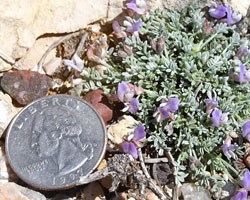
Grand Canyon’s rarest plant, sentry milk-vetch (Astragalus cremnophylax var. cremnophylax), grows at only three locations on the South Rim.
This tiny member of the pea family with minute pale purple flowers favors very specific habitats at the canyon's edge. It grows in openings of the pinyon-juniper woodland, in shallow soil pockets atop the highly porous Kaibab Limestone. Listed as endangered in 1990, sentry milk-vetch is at risk of extinction because the plant exists in just three populations in very small numbers.
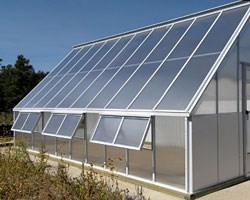
The species will be considered recovered when there are eight stable populations of 1,000 plants each.
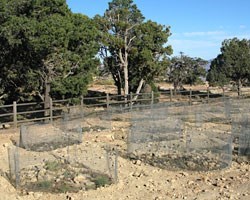
An important part of the road construction project was the removal of the Maricopa Point parking lot adjacent to the existing population in order to provide more habitat for sentry milk-vetch. Most of the former Maricopa Point parking lot was restored with native shrubs and grasses, but a portion of it was set aside for a pilot project to restore sentry milk-vetch habitat and test reintroduction methods for the plant.
The re-introduction of sentry milk-vetch there will be a multi-faceted project, including recreating the unique soil characteristics that will support these plants, planting companion species such as the Tusayan flameflower, and ultimately planting both sentry milk-vetch seeds and plants that were propagated by the park in an ex situ population.
In 2009, park staff undertook important steps to prepare for the initiation of sentry milk-vetch re-introduction trials at Maricopa Point. Park horticulturalist Janice Busco has coordinated and supervised all the complex components of this major restoration and protection effort.
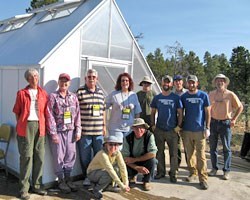
Busco explained, “Having a greenhouse dedicated to sentry milk-vetch will really help us establish the ex situ population. Sentry milk-vetch is hard to grow in a greenhouse setting, and with the new greenhouse, we will be able to fine tune it to meet the plants’ needs with lower humidity and bright sunlight in order to optimize sentry milk-vetch growth and seed production. It’s important to get the greenhouse population established as it is needed to provide seed and plants for the pilot project within the former Maricopa Point parking lot area.”
Building on seed germination studies began in 1989 by the Arboretum at Flagstaff, Grand Canyon National Park vegetation program staff initiated seeding trials in 2009.
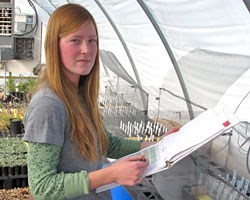
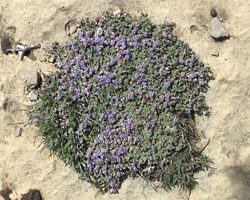
Douglas said, “As an SCA intern, I feel honored and humbled to be working with such a rare species.
All the time I have spent with sentry milk-vetch has really put into perspective the invasiveness of our own species and the need for greater action in preservation everywhere.
People ask me what the point is in saving one little plant. I believe it has intrinsic value. After all, the plants were here before us and I was raised to respect my elders.”

"This planting is made possible only by seed production from the ex situ population," Busco said. “The availability of sentry milk-vetch seed is the limiting factor in increasing the number of plants in the wild and meeting recovery plan goals.
By spring 2010, seedlings in the greenhouse population of sentry milk-vetch should have matured sufficiently to begin to flower and produce seed. Each tiny flower will be carefully hand pollinated to maximize seed set.”

